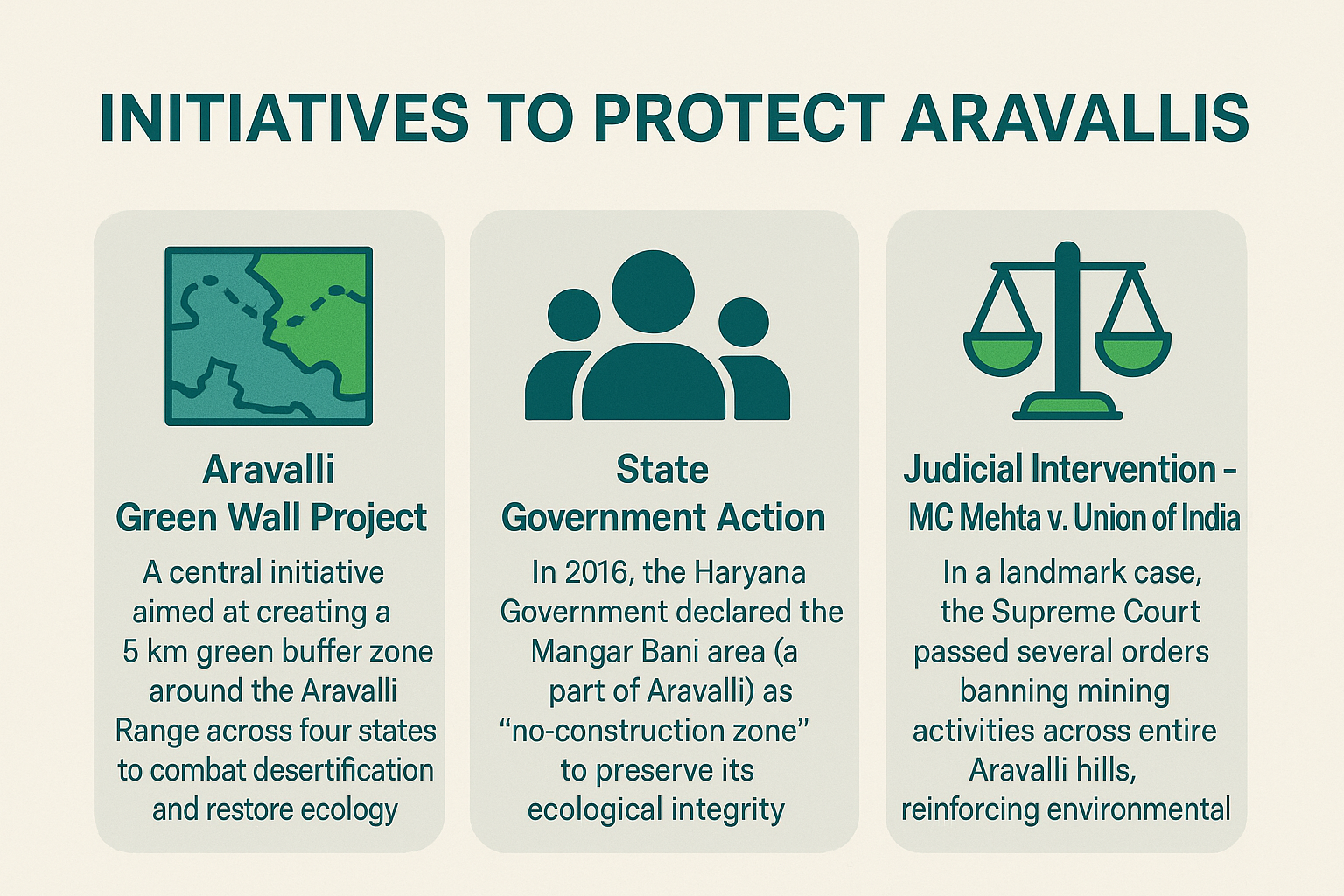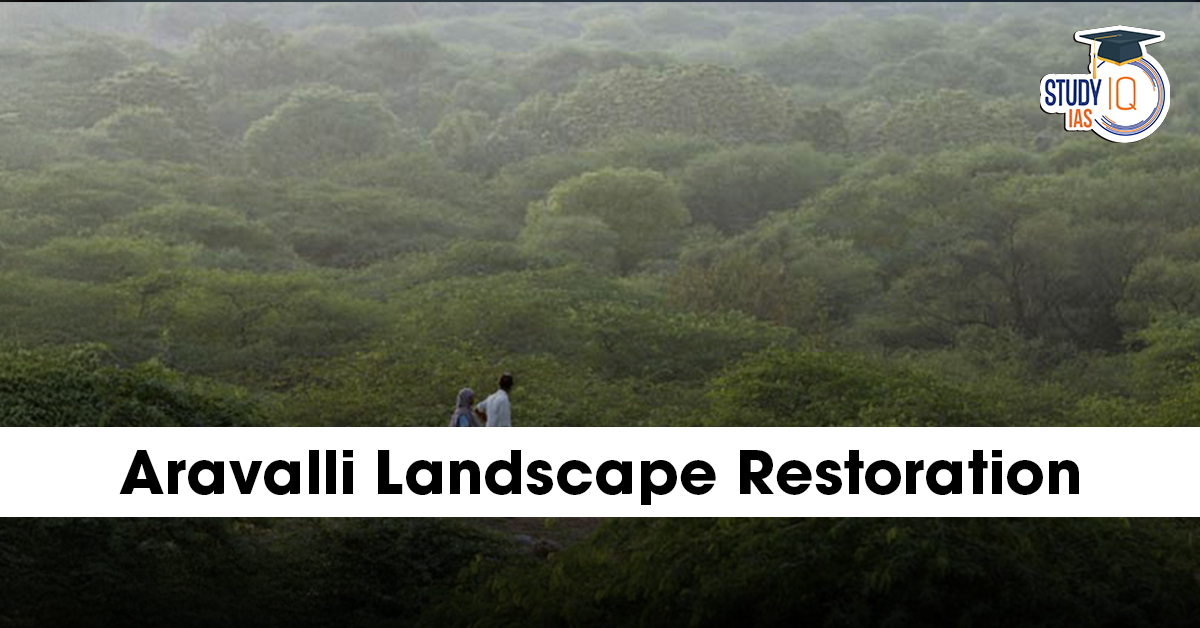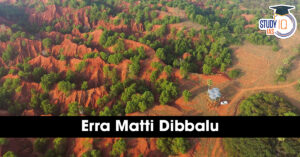Table of Contents
Context: The Union Minister for Environment, Forest and Climate Change introduced a Detailed Action Plan for Aravalli Landscape Restoration on the International Day for Biodiversity.
- Exhorted all stakeholders to adopt a ‘Whole of Government’ and ‘Whole of Society’ approach in the restoration of the Aravallis.
What are the 5 Pillars of Aravalli Landscape Restoration
- Ecological Restoration: Assisted natural regeneration, native species plantation, soil and moisture conservation.
- Community Participation: Involving local communities, especially women and youth, in planning and implementation.
- Policy and Governance: Strengthening regulatory frameworks, convergence of schemes, and effective monitoring.
- Sustainable Livelihoods: Promoting eco-tourism, agroforestry, and non-timber forest produce (NTFP)-based enterprises.
- Research and Innovation: Using GIS-based mapping, remote sensing, and restoration ecology practices for informed action.
🏔️ About Aravallis
- The Aravalli Range is one of the oldest mountain ranges in the world, predating even the formation of the Himalayas.
- Geographical Spread: It is located in north-western India, stretching approximately 692 km in the states of Gujarat, Rajasthan, Haryana and Delhi.

- Role: The Aravallis play a critical role in India’s monsoon system and help in regulating temperature in the surrounding regions.
- The range acts as a natural barrier, preventing the Thar Desert from encroaching into the fertile agricultural lands of Rajasthan and Gujarat.


 Places in News for UPSC 2026 for Prelims...
Places in News for UPSC 2026 for Prelims...
 Lake Natron: Location, Features, Wildlif...
Lake Natron: Location, Features, Wildlif...
 Erra Matti Dibbalu Added to UNESCO Tenta...
Erra Matti Dibbalu Added to UNESCO Tenta...

























